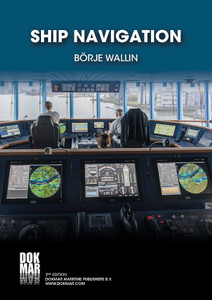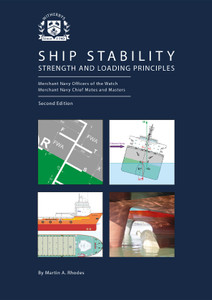
This book is intended to be a reference guide for those engineers dealing with the design and operation of ship electric energy systems. Modern ships tend to be more and more electrified, hence their electric energy system is of utmost importance, especially considering its predominant role in total efficiency, emissions, and fuel consumption.
This guide to designing the electric energy system of ships covers the following topics:
- The main operation of electric load balance analysis, accompanied by the generator energy systems
- The detailed method of electric load balance analysis, accompanied by the generator sizing procedure
- The major issues of short circuit calculation study, mainly as outlined by IEC61363
- The generic method of designing the electric power distribution network of the ship
- The major issues of the synchronised operation of ship generators
- An overview of the power supply quality terms as met aboard a ship
- The methodology to design the most efficient earthing scheme of a ship electric energy system is presented
The authors have made a special effort not to repeat the knowledge already published in the well-renowned textbooks of the international literature but instead, to complement it. Hence, to the best of the authors’ knowledge, the information provided in this book is original and instructive, having considered certain improvements in the design of ship electric energy systems over the years.
Preface to the Second Edition
This Second Edition has integrated certain significant amendments, both enriching the contents of the seven chapters of the First Edition and also enhancing them by the addition of the eighth chapter, in all cases taking into account the remarkable changes introduced in the ship electrification sector in the last decade. In particular, compared to the First Edition, the following changes are noted:
• In Chapter 3, an alternative methodology to perform analytical short and open circuit studies applying the well-known Millman’s Law has been added. Though not easily applicable in all network configurations, its main advantage is that it takes into account the active character of both generators and motor loads while it is not dependent on the phasor sinusoidal steady-state operation and the sequence networks
• Chapter 4 has been expanded, describing in brief the methodology to perform an arc-flash study required for the safety of technical staff dealing with electrical maintenance works
• Chapter 6 has been updated with new aspects of power quality now occurring in ship electric networks, while methods of monitoring, identifying and mitigating power quality events are outlined
• Chapter 7, facing the challenges of designing efficient earthing schemes, has been enriched with theoretically based methods accompanied by earthing quality indices, enabling their quantitative evaluation
• Chapter 8 is a completely new chapter presenting the main principles for performing a techno-economic analysis to assess the feasibility of investing in electrification technology
• the Literature section has been enhanced by appropriate additional references, and it is followed by six appendices:
Appendices A, B, C are identical to those of the First Edition. In Appendix D, indicative cross-sections of marine-type cables and bus-bars used in designing the power distribution network are tabulated. In Appendix E, a companion to Chapter 8, a comparative case study is presented investigating alternative energy configurations, mainly with reference to conventional propulsion, diesel electric, gas electric or battery electric. Finally, Appendix F is a slightly updated version of Appendix D in the First Edition, summarising the ship electric grid design procedures in flowcharts.
The authoring team has been expanded to include Dr Elias Sofras, while during the preparation of this updated version, one of the authors, Dr Christos Kourtesis, passed away. We wish to pay tribute to him for his invaluable contribution to marine electrical engineering knowledge.
We are, once again, indebted to IMarEST Publications for approving this revised publication and will be most grateful to those readers who would like to share their comments and remarks with them.
The Authors
Dedicated to our families for their support and encouragement
Preface to the Second Edition
Preface to the First Edition
Chapter 1 Generic Configurations of Ship Electric Energy Systems
1.1 Introduction
1.2 Operation frequency and voltage
Chapter 2 Electric Load Balance Analysis
2.1 Ship energy profile and operation modes
2.2 Preliminary electric balance
2.2.1 ‘Sailing at sea’ operation mode
2.2.2 ‘Port’ operation mode
2.2.3 ‘Manoeuvring’ operation mode
2.3 Analytic electric load analysis
2.3.1 Auxiliaries of main propulsion engine
2.3.2 Auxiliaries of engine room
2.3.3 Main deck auxiliaries
2.3.4 Ventilation and air conditioning systems
2.3.5 Galleys and laundry
2.3.6 Lightings
2.4 Extending electric power balance analysis
2.4.1 Reactive power balance
2.4.2 Efficiency as a function of service load factor
2.4.3 Extended electric load analysis
2.5 Selection criteria for number and rated power of generator sets
2.5.1 Emergency generators
2.5.2 Shore connection
2.5.3 Load shedding system (preferential tripping system)
Chapter 3 Short Circuit Calculation Study
3.1 Short circuit definition
3.2 Adverse consequences of short circuits
3.3 Standards, rules and regulations
3.4 Protection against short circuits
3.5 The electric grid during short circuit
3.6 Symmetrical three-phase short circuit faults
3.6.1 Contribution of synchronous machines
3.6.2 Contribution of asynchronous machines
3.6.3 Contribution of passive elements
3.7 Unbalanced short circuit faults
3.7.1 Analysis of unbalanced operating conditions via symmetrical components
3.7.2 Analysis of unbalanced operating conditions via Millman’s Law
3.8 Uses of short circuit calculation study
Chapter 4 Design of Electric Power Distribution Network
4.1 Electrical installation
4.1.1 Cable rating
4.1.2 Voltage drop
4.2 Switchboard components
4.2.1 Fuse rating
4.2.2 Circuit breaker rating
4.2.3 Bus-bar rating
4.3 Power distribution network configurations
4.4 Protection devices co-ordination – selectivity
4.4.1 Selectivity in radial networks
4.4.2 Selectivity in loop networks
4.5 Protective equipment for technicians – arc-flash study
Chapter 5 Synchronised Operation of Generators
5.1 Three-phase auxiliary AC generators – main principles of operation
5.1.1 Speed governor and voltage controller
5.2 Shaft generator schemes
5.3 Generators synchronisation – conditions for parallel operation
5.4 Synchronising procedure control
5.5 Active load sharing
5.5.1 Parallel operation of a generator with an infinite bus
5.6 Mathematical relationships P-δ and Q-V
5.7 Reactive load sharing
5.8 The special case of the shaft generator systems
5.9 Primary load sharing
5.10 Secondary load sharing
Chapter 6 Power Supply Quality Problems in Ship Electric Grids
6.1 Introduction
6.2 Harmonic distortion
6.3 Voltage unbalance
6.4 Leakage capacitive currents
6.5 Spikes and transients
6.5.1 Surge protection devices (SPDs)
6.5.2 Surge arrester installation points
6.6 Dips and swells
6.6.1 Fault-induced dips
6.6.2 Motor voltage dips
6.6.3 Transformer voltage dips
6.7 Modulation/pulsed loads
6.8 Classification-identification of voltage dips
Chapter 7 Earthing Schemes of Ship Grids
7.1 Ship electric network earthing – an overview
7.2 Unbalanced operation – sequence networks
7.2.1 Single-phase fault
7.2.2 Two-phase earth fault
7.2.3 Single-phase open circuit operation
7.2.4 Two-phase open circuit operation
7.2.5 Operation with harmonic distortion
7.3 Adjusting the earthing quality
7.3.1 Method to assess the overall earthing quality
7.3.2 Numerical case study
Chapter 8 Performing Techno-economic Analysis of Ships
8.1 Introduction
8.2 Net present value (NPV)
8.3 Internal rate of return on investment (IRR)
8.4 Discounted payback (DPB) period
8.5 CAPEX and OPEX indices
8.6 Present worth cost (PWC) of the life cycle
Literature
Standards
Books
Papers
Webpages
Appendix
Appendix A – The per unit (pu) reference system
Appendix B – Negative-sequence reactance X2
Appendix C – Representative example of short circuit study
Appendix D – Tables of cables and bus-bars
Appendix E – Techno-economic analysis case study
Appendix F – Ship electric energy system design
- Number of Pages:
- 201
- Published Date:
- August 2022
- Book Height:
- 297 mm
- Book Width:
- 210 mm
- Weight:
- 1 kg
- Author:
John Prousalidis, Christos Kourtesis and Elias Sofras
- Preview:
- Yes
- Publication Date:
- August 2022






